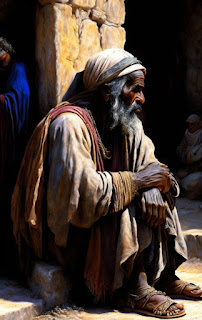Did Paul Write the Pastoral Epistles?
The authorship of the Pastoral Epistles (1 Timothy, 2 Timothy, and Titus) has been a topic of debate among biblical scholars for centuries. While some argue that Paul wrote these letters, others suggest that they were written by a different author, perhaps a follower or disciple of Paul. In this article, we will explore the evidence for and against Pauline authorship of the Pastoral Epistles and come to the conclusion that he did not write them.
Arguments for Pauline authorship
One of the primary arguments for Pauline authorship of the Pastoral Epistles is their inclusion in the canon of the New Testament. If these letters were not written by Paul, why would they be included in the Bible alongside his other letters? Additionally, these letters claim to be written by Paul, which further supports the argument for his authorship.
Another argument for Pauline authorship is the content of the letters themselves. They contain many of the same themes and ideas found in Paul's other letters, such as the importance of sound doctrine, the need for leaders to be qualified and morally upright, and the centrality of Christ in salvation.
Furthermore, the letters mention individuals who are known to have been associated with Paul, such as Timothy and Titus. This seems to suggest that the author was someone who knew Paul personally and had traveled with him on his missionary journeys.
Arguments against Pauline authorship
Despite these arguments, there is significant evidence against Pauline authorship of the Pastoral Epistles. One of the most compelling pieces of evidence is the differences in style between these letters and Paul's other writings. The language and syntax of the Pastoral Epistles are noticeably different from that of Paul's undisputed letters. For example, the vocabulary used in the Pastoral Epistles is much more limited than that found in Paul's other letters, and the sentence structure is much simpler.
Another piece of evidence against Pauline authorship is the presence of chronology errors and references to post-Pauline events in the letters. For example, 1 Timothy 6:20 mentions "the science falsely so-called," which is believed to be a reference to Gnostic teachings that did not emerge until after Paul's death. Additionally, the mention of officials such as "bishops" and "deacons" suggests that these letters were written at a later date when the Christian church had become more organized and hierarchical.
Another significant difference between the Pastoral Epistles and Paul's other letters is the treatment of women. In his other letters, Paul is more egalitarian towards women, encouraging them to preach, minister, prophesy, and serve in the church on an equal footing to men. However, in the Pastoral Epistles, women are depicted primarily as wives and mothers, with little mention of their role in the church.
Additionally, while Paul stresses the importance of chastity and celibacy in his other writings, the author of the Pastoral Epistles encourages men to marry and have children. This is a significant departure from Paul's earlier teachings.
Conclusion
In light of these differences in style, chronology errors, and teachings, it seems highly unlikely that Paul wrote the Pastoral Epistles. While these letters do contain some of the same themes and ideas found in his other writings, the differences in language and content suggest that they were written by someone else.
Furthermore, the hierarchical nature of the letters, the emphasis on the role of women as wives and mothers, and the encouragement of marriage and children are all inconsistent with Paul's earlier teachings and suggest a later date of authorship.
Therefore, while the authorship of the Pastoral Epistles remains a topic of debate, it seems clear that Paul did not write these letters.
Art by Che




Comments
Post a Comment